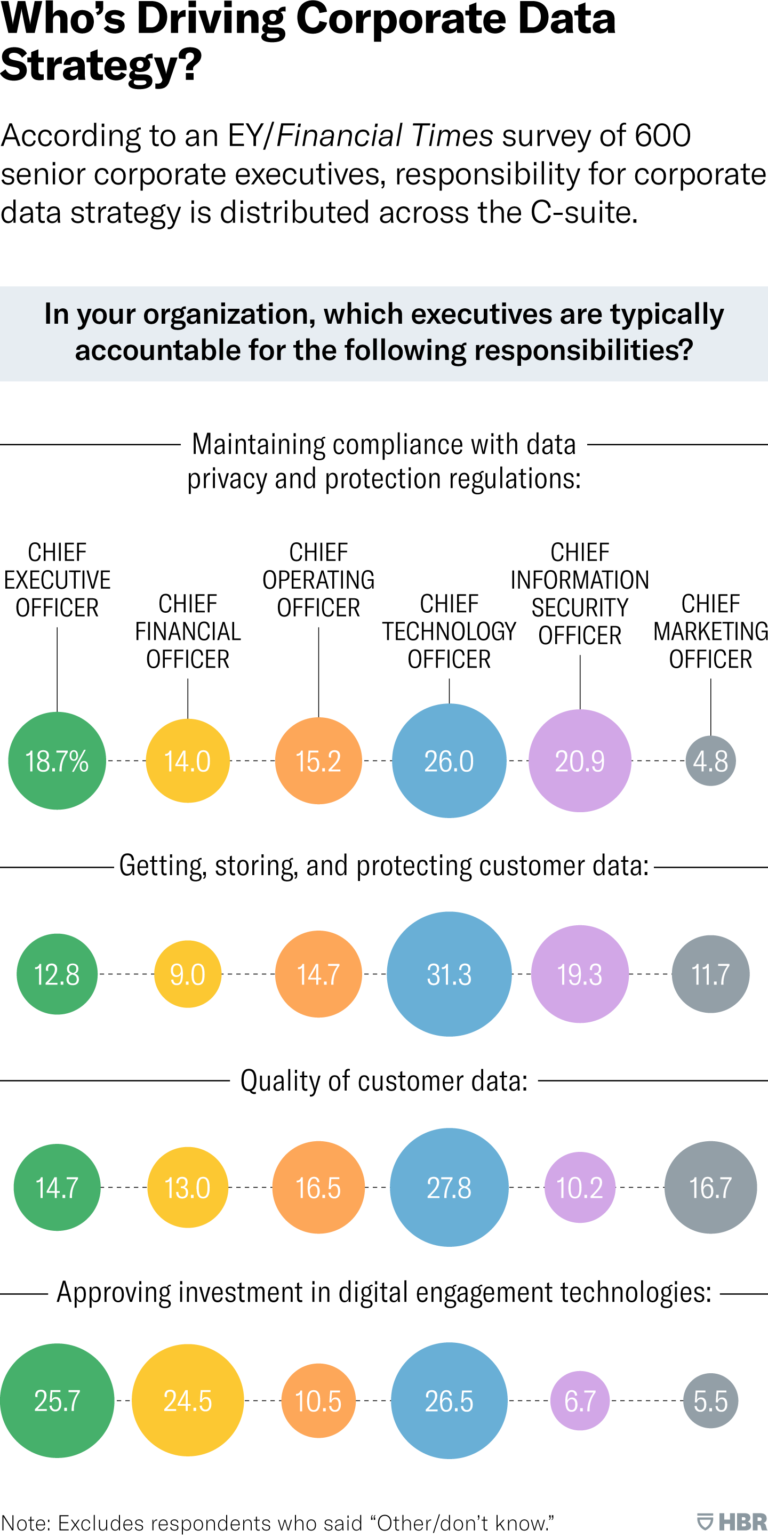5 Ways Marketing Leaders Can Drive More Value in 2022

As we begin 2022, we face the third year in which the pandemic is transforming our business reality. The acceleration of digital behaviors isn’t abating, nor are your customers’ expectations.
As the crisis persists, this is a year for marketing leaders to redouble their commitment to accelerating transformation at scale. With the widespread recognition of their impact on sales, outcomes, and growth, marketers have a new mandate to take center stage in their organizations, connecting the dots across customer needs and data, business priorities, and the digital agenda to aggressively drive growth and create value.
The question is: How can CMOs drive change and create value fastest? Based on what I’m seeing as I work with CMOs on data-driven transformation of marketing, e-commerce, and every aspect of the customer journey, I recommend marketing leaders consider five actions to drive more impact:
1. Your company now recognizes that marketing drives revenue. Seize the shift.
It wasn’t fun when marketing was a cost center, particularly when the CFO needed to cut an area of discretionary spend. But now, marketing is understood as a revenue driver, integrally tied to sales.
Today’s media types, like social, search, and programmatic, are all highly measurable and have positively habituated leaders across the executive team to expect results from marketing spend. Certainly, over-indexing on performance-only spend (like last-click online sales) can sacrifice brand health and equity. The best strategies balance short and long-term results. But the productive impact of the performance dollar swing is that leaders outside of the marketing function now see the tangible impact of marketing at work.
This offers an opportunity for marketers to be on more equal footing with the traditional revenue leaders of the organization — sales — and marketers should seize this shift. In 2022, the key will be to make results understandable to broader audiences across the company. Attribution, or the math that allows us to know which marketing efforts drove results, continues to challenge us all, as mobile platforms, browsers, and walled gardens in e-commerce and social media continue to change the rules and fragment the landscape. But marketers shouldn’t be afraid to create “good enough” math to understand dollars throughout the full funnel — from top-of-funnel brand awareness to bottom-of-funnel click-to-purchase moments. The more holistically companies see spend as driving some form of performance, the better. The key is to focus less on each individual line of spend and more on the predictive and collective value of them in combination.
2. Grab the end-to-end growth agenda as the rightful domain of marketing.
Today’s growth agenda doesn’t respect prior organizational boundaries confined to conventional notions of marketing or other adjacent functions. Marketers must stake an explicit claim to drive the growth agenda and provide cohesive business leadership.
This is not about building a fiefdom to grab the data, analytics or technology agenda, teams, or budget. It’s about building the right internal connectivity through the lens of the customer journey. Customers don’t care about internal organizational boundaries — they expect their experiences to be intuitive, anticipatory, and relevant. Handoffs across organizational functions often stand in the way of that goal.
Take the fast-paced growth of social commerce, which is a great example of the seamless new growth agenda. Media put forward to consumers is targeted with tremendous precision and should connect directly to an effective, personalized e-commerce experience. The connected social commerce journey should also recognize users are most likely on a mobile device and therefore require a fast, frictionless, mobile-first payment experience. Any barrier to check-out prevents marketing from turning into a sale. Marketers must work with their colleagues who create online product pages and payment mechanics to create an experience with minimal friction. Simply put, it all must flow naturally and that will take more real-time coordination than most current organizational boundaries allow.
A recent EY/Financial Times survey of approximately 200 senior marketing executives showed that 77% of the respondents believe the marketing function needs a stronger voice in setting corporate strategy as owners of the customer journey. Areas like data-driven marketing, e-commerce, and CRM cannot afford to be led in silos given how quickly friction must come out of the customer journey to accelerate topline growth.
3. Stop ignoring the foundational data work that enables digital transformation, even if it’s not sexy.
The pandemic united C-suite leadership teams like never before, so digital transformation got an unquestionable acceleration at many companies. However, the success of a digital transformation relies on the success of the data transformation. Companies may implement technology like CRM or consolidate sources into a single data lake, but key questions often still need to be addressed, such as the true level of data quality and how to manage the ongoing health of data throughout the organization. Marketers should be keenly focused on the right sources of quality data fueling the engine. Value is created by more holistic analytics models driving last-mile decisions as opposed to siloed, one-off solutions hard-coded for a moment in time or a specific business use case.
It’s only through the true partnership of functional business leaders in sales and marketing, technology, data/analytics, and finance that more sustainable and meaningful change can happen. In fact, the EY/Financial Times survey heard from 600 cross-functional senior executive respondents in marketing, technology, and finance who highlighted that the data strategy is more distributed than ever across executive roles including the CEO, CFO, COO, CTO, CISO, and CMO.

Scaling results requires that the data, technology, and business transformations are fully in sync — and the answer is not simply a better “dashboard” or data visualization. The work to integrate data into digital technology and process can be daunting, particularly at global scale, but if done right, the value creation will build momentum and belief.
4. Prioritize talent issues ASAP, and don’t be afraid to try something new or radical.
For all the talk about data and technology, the talent issue is likely to be the most vexing challenge in 2022. Based on extensive conversations over the last year with CMOs across sectors, from consumer goods to technology to manufacturing, there is wide agreement on the talent challenges, including data-driven skill scarcity, overall retention challenges, and incentive alignment.
To succeed, today’s marketers need both diverse and detailed expertise, breadth, and depth. This is forcing leaders to look at how they structure and train their teams, manage and collaborate with external partners, like agencies, and embrace new labor models, while driving the right balance of consistency and independence. Many leaders are taking matters into their own hands, creating new curricula to transform their current talent to become modern, full-stack marketers. These actions create more consistency, and even mobility, within the company.
5. As you get more data driven, don’t lose that creative spark.
The data revolution means that there’s far more future-forward thinking. Today’s marketers should spend less time looking in the rearview mirror to analyze prior results, and instead use predictive analytics to forecast the future. These new superpowers allow marketers to drive both growth and operational efficiency in profound ways as they, for example, can not only target advertising, but also make sure that they’re only running it when the company’s supply chain is positioned to deliver the products.
However, if marketers become unilaterally data driven and lean too far into automation, they will lose their most differentiating skills around human intuition and creativity. The art of the storytelling craft will be more important than ever to ensure that, even when targeted well and at speed, creative messaging still connects with humans. New marketing options and formats will continue to emerge, from retail media networks in the physical and digital world to virtual branding and transactional experiences in the metaverse. There must be space to take risks and be distinctive, regardless of whether the math is fully understood from the start.
In 2022, marketing leaders have the opportunity to connect the customer journey to the full-growth agenda, retaining their creativity while scaling data and technology in more meaningful ways than ever before. The speed with which decisions need to be made will only become faster, while also becoming more multivariable, connected, and complex. Those who can build the internal connective tissue will transform their companies to be dramatically more competitive and unlock new levels of value creation, taking center stage in the growth strategy and C-suite.
___
by Janet Balis
source: HarvardBusinessReview

